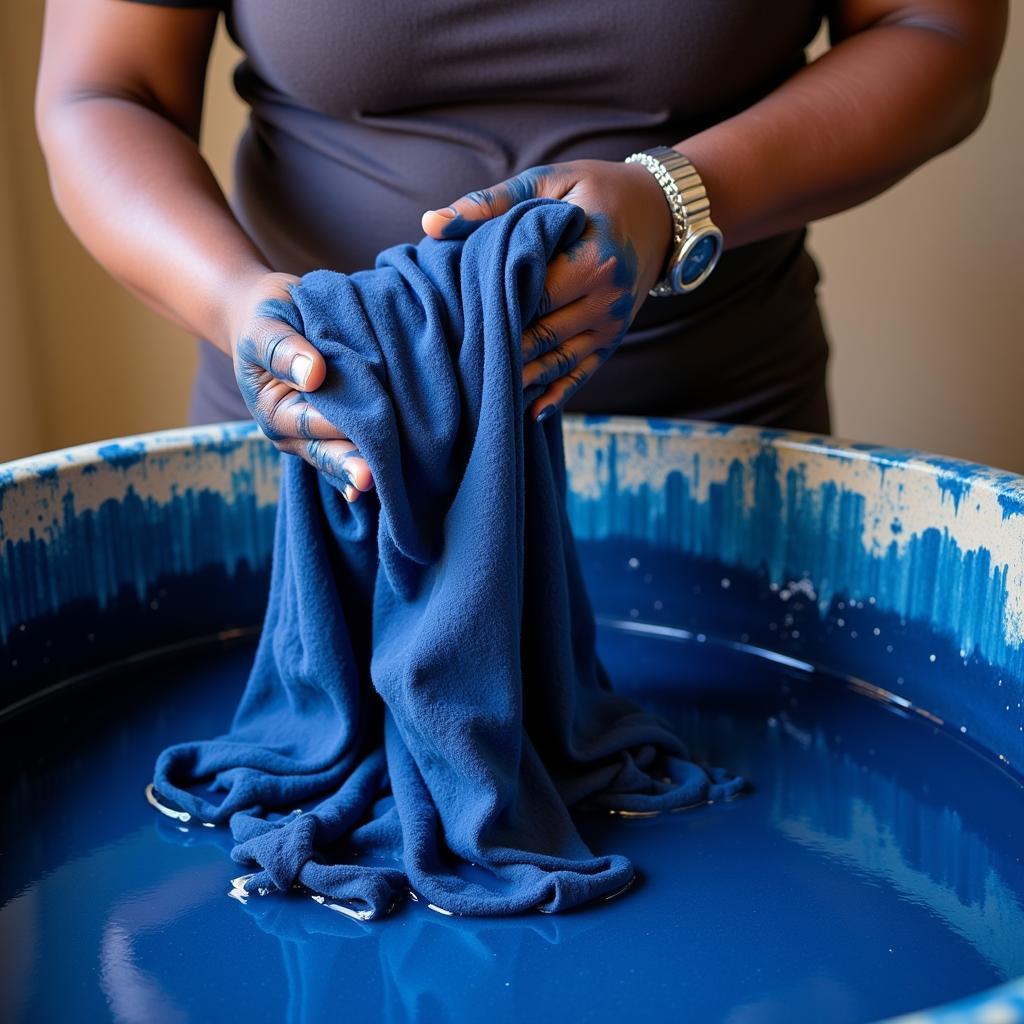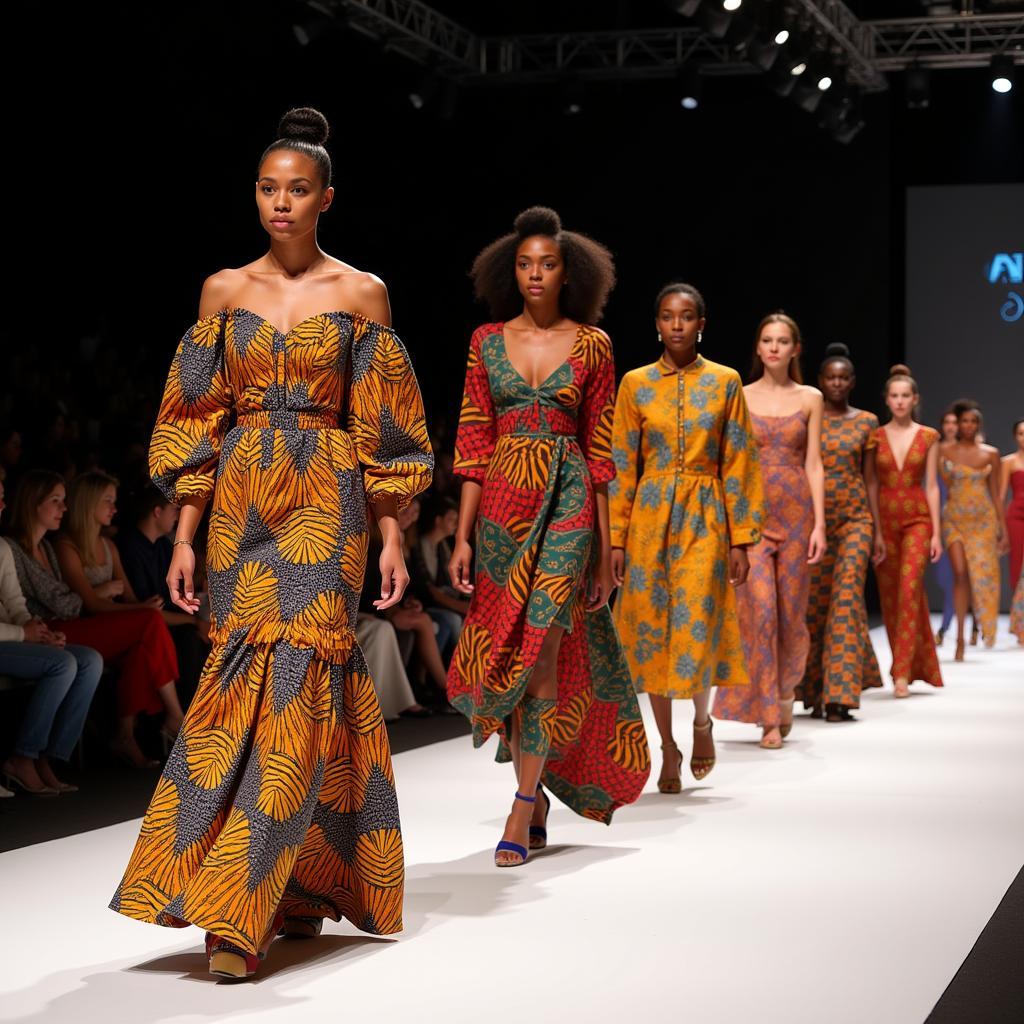Exploring the Vibrant World of African Cloth
African Cloth is more than just fabric; it’s a vibrant tapestry woven with history, culture, and artistry. From the intricate patterns of kente to the bold mud cloth designs, each textile tells a story, reflecting the diverse heritage of the African continent. This article delves into the rich world of African cloth, exploring its significance, production techniques, and contemporary uses.
African clothing for women often features these vibrant textiles. These cloths are not mere coverings; they are symbols of status, ethnicity, and spiritual beliefs. The colors, patterns, and even the way the cloth is worn can convey deep meaning, communicating messages without words. The rich symbolism embedded within African cloth makes it a powerful form of non-verbal communication, a silent language understood across communities. For instance, the Adinkra symbols of the Asante people in Ghana each represent a specific proverb or concept. You can find some amazing pieces at an African clothing boutique near me.
What makes African cloth so unique is the meticulous craftsmanship that goes into its creation. Traditional techniques, passed down through generations, involve intricate weaving, dyeing, and embellishment processes. From the hand-spun cotton of West Africa to the raffia fibers of Madagascar, the materials themselves are often locally sourced and imbued with cultural significance. Some techniques, such as tie-dye and batik, create mesmerizing patterns, while others, like embroidery and appliqué, add layers of texture and detail.
 West African Indigo Dyeing Process
West African Indigo Dyeing Process
The use of African cloth extends beyond traditional garments. Today, these vibrant textiles are finding their way into contemporary fashion, interior design, and art. Designers across the globe are incorporating African cloth into their creations, bringing its unique aesthetic to a wider audience. From high-fashion runways to local markets, the influence of African cloth is undeniable. This resurgence of interest is not just a fashion trend; it’s a recognition of the artistic and cultural value of these exceptional textiles. You can also find African cloth dress designs online.
The History and Significance of African Cloth
African cloth has a long and fascinating history. For centuries, it has played a vital role in social, economic, and religious life. In many cultures, specific cloths are reserved for special occasions, ceremonies, and rituals. They serve as a tangible link to the past, connecting present generations to their ancestors and heritage. The history of African cloth is intertwined with the history of the continent itself, reflecting trade routes, cultural exchanges, and the evolution of artistic traditions.
Different Types of African Cloth and Their Origins
From the intricate kente cloth of Ghana to the colorful Ankara prints of Nigeria, the diversity of African cloth is astounding. Each region and ethnic group has its own unique textile traditions, resulting in a kaleidoscope of patterns, colors, and techniques. Learning about the different types of African cloth offers a glimpse into the rich cultural tapestry of the continent. Exploring the specific origins and symbolism of each cloth deepens our appreciation for the artistry and heritage they represent.
How is African Cloth Made?
The creation of African cloth is often a labor of love, involving multiple steps and intricate techniques. Understanding the process, from the harvesting of raw materials to the final finishing touches, allows us to appreciate the skill and dedication of the artisans. Let’s take a closer look at some of the common methods used in producing African cloth.
Weaving:
- Traditional looms are used to create intricate patterns and textures.
- Different weaving techniques result in unique cloth characteristics.
Dyeing:
- Natural dyes derived from plants and minerals create vibrant and lasting colors.
- Techniques like tie-dye and batik produce distinctive patterns.
Embellishment:
- Embroidery, appliqué, and beadwork add intricate details and further enhance the beauty of the cloth.
African Cloth in the Modern World
While rooted in tradition, African cloth is also finding its place in the modern world. Contemporary designers are embracing these vibrant textiles, incorporating them into fashion, accessories, and home décor. This renewed interest is not only helping to preserve traditional crafts but also introducing the beauty of African cloth to a global audience. You can easily find African clothing mens amazon nowadays.
 Modern African Print Fashion Show
Modern African Print Fashion Show
Conclusion
African cloth is a testament to the creativity and cultural richness of the African continent. From its historical significance to its contemporary applications, African cloth continues to captivate and inspire. By understanding and appreciating the artistry and heritage behind these textiles, we can contribute to their preservation and celebrate the vibrant tapestry of African culture. You can find unique pieces like African cloth necklaces to complement your style.
FAQ
- What is the most popular type of African cloth? Ankara print is arguably the most widely recognized.
- How can I care for African cloth? Hand washing is generally recommended to preserve the vibrant colors.
- Where can I buy authentic African cloth? Online marketplaces and specialty stores offer a wide selection.
- Is African cloth expensive? Prices vary depending on the type of cloth, its origin, and the intricacy of the design.
- Can I use African cloth for sewing projects? Absolutely! It’s a versatile material suitable for various creations.
- What is the significance of Kente cloth? Kente is a royal and sacred cloth associated with the Akan people of Ghana, often worn during important ceremonies.
- How are Adinkra symbols used on African cloth? Adinkra symbols are often printed or stamped onto cloth, representing various proverbs and concepts.
Related Questions and Further Exploration
- Explore the history of specific African textile traditions.
- Learn more about the symbolism behind different patterns and colors.
- Discover contemporary designers who are incorporating African cloth into their work.
Call to Action
For any inquiries or assistance, please don’t hesitate to contact us. You can reach us 24/7 via phone at +255768904061, email us at kaka.mag@gmail.com, or visit us in person at Mbarali DC Mawindi, Kangaga, Tanzania. Our dedicated customer service team is always ready to help!
